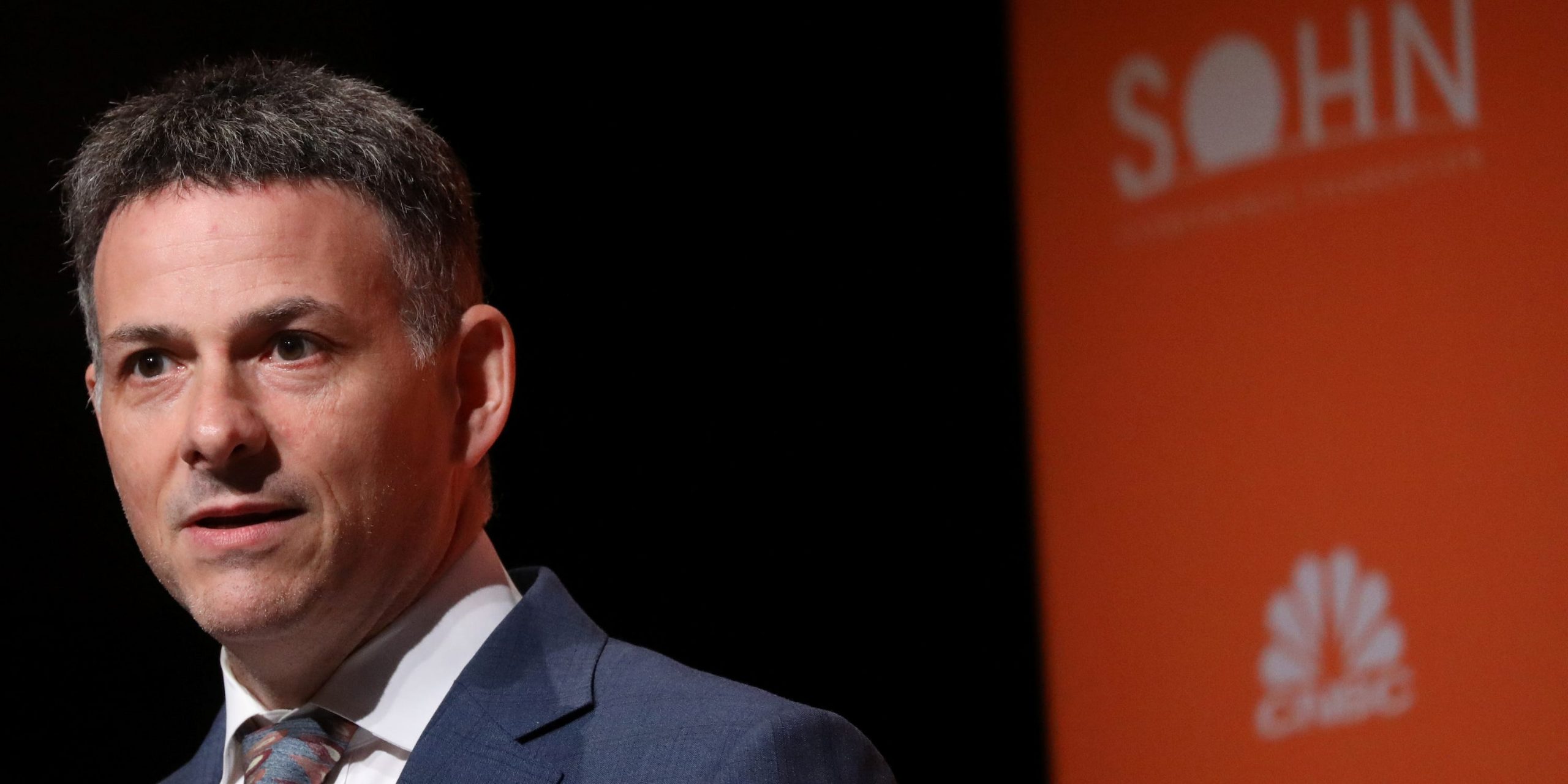
REUTERS/Brendan McDermid
- September 2 was the top in the stock market, the hedge-fund investor David Einhorn argued in Greenlight Capital’s third-quarter letter.
- Einhorn said that the market was in a bubble driven by technology stocks and that the bubble “has already popped.”
- Einhorn said that what matters in a bubble is market psychology, not valuation. “Valuation is irrelevant; that’s what makes it a bubble,” he said.
- Here are 10 reasons technology stocks are in a bubble, according to Einhorn.
- Visit Business Insider’s homepage for more stories.
The top in the stock market is in, on September 2, according to the hedge-fund investor David Einhorn.
In Greenlight Capital’s third-quarter letter, Einhorn offered 10 reasons technology stocks are in a bubble that “has already popped.”
“Bubbles tend to topple under their own weight,” Einhorn said, adding that market psychology is what matters in a bubble, not valuation. “Valuation is irrelevant; that’s what makes it a bubble,” Einhorn said.
Einhorn acknowledged that his 2016 bubble call was wrong and that this one could be disproved. But he contended that investor sentiment was moving from greed to complacency, something that happens just before it moves to worry and then panic.
Here are 10 reasons technology stocks are in a bubble, according to Einhorn.
1. "An IPO Mania."
2020 has seen a surge in initial public offerings despite the COVID-19 pandemic, and "blank check" special-purpose acquisition companies have been the preferred route for companies to go public. Just this week Jack Ma's Ant Financial Group said it planned to raise $35 billion in a record-breaking IPO.
2. "Extraordinary valuations and new metrics for valuation."
Einhorn pointed to his recent favorite: price-sales growth divided by sales growth. "This ratio is the PEG ratio on steroids and amounts to nonsense," he said.
3. "A huge market concentration in a single sector and a few stocks."
The top five stocks in the S&P 500 make up 20% of the entire index, according to Ned Davis Research, while the technology sector represents more than 28% of the index.
4. "A second tier of stocks that most people haven't heard of at S&P 500 type market capitalizations."
Einhorn was likely referring to a slew of cloud and software stocks that have seen a meteoric rise during the COVID-19 pandemic and now sport valuations of more than $20 billion. Some examples include ZScaler, Okta, and RingCentral.
5. "The more fanciful and distant the narrative, it seems the better the stock performs."
Einhorn could be referring to story stocks that have a business plan but little to no revenue and yet still see a surge in valuation. One example is Nikola, which went public via an SPAC earlier this year and saw its market value surge ahead of Ford's even though it said it didn't expect to sell cars and recognize revenue until late 2021.
6. "Outperformance of companies suspected of fraud based on the consensus belief that there is no enforcement risk, without which crime pays."
Einhorn could be referring to GSX Techedu, which has been accused of fraud by short-sellers like Muddy Waters but seen its market valuation surge on the belief that the Chinese company will not face consequences.
7. "Outsized reaction to economically irrelevant stock splits."
Einhorn was likely referring to the August stock splits of Apple and Tesla. Both experienced a surge in their share prices, and Tesla added more than $200 billion in market value in the two weeks after its stock-split announcement.
8. "Increased participation of retail investors, who appear focused on the best-performing names."
The COVID-19 pandemic has resulted in a surge in trading activity among retail investors, as stay-at-home orders drove more people to pass the time with the ups and downs of the stock market.
9. "Incredible trading volumes in speculative instruments like weekly call options and worthless common stock."
Einhorn pointed to Hertz common stock as an example, noting that 1 billion shares traded in a single day earlier this month after the car-rental company said it had obtained potential debtor-in-possession financing. "Historically, in a bankruptcy like this, the shares would be promptly delisted by the exchange to protect retail investors," Einhorn said.
10. "A parabolic ascent toward a top."
Stocks have surged to all-time highs during the COVID-19 pandemic, driven by the technology sector in particular.
Einhorn isn't alone in his thinking. Ned Davis Research said in a note on Monday that the "Elite Eight" technology stocks looked like a bubble after their historic ascent. According to NDR, these eight companies have seen their collective market capitalization surge to $8 trillion from $1 trillion in eight years.
Einhorn included an anecdote about the "toppy behavior" he had seen in the markets: He said he received a job application from a 13-year old with the subject line "I am young, but good at investments."










